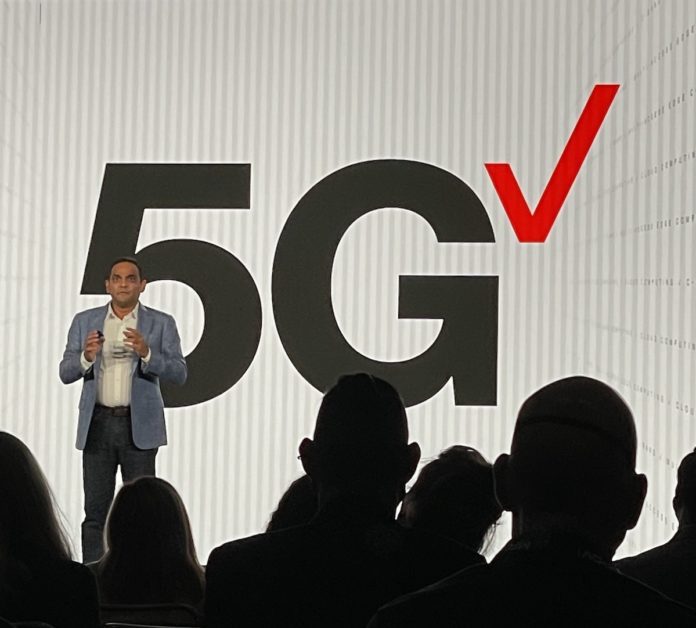Verizon looks to “make the market” in combining 5G and mobile edge computing
Sowmyanarayan Sampath, the new head of Verizon Business, this week discussed what he sees as three technology trends that, when coupled with the operator’s 5G network, can grow total addressable market by $90 billion. Speaking at the Oppenheimer 25th Annual Technology, Internet and Communications Conference, Sampath identified 5G-backed mobility, broadband and distributed cloud computing as “pathways to growth.”
On mobility, “We have close to 45% share in a pretty competitive market,” he said. “And every quarter, we are putting points on the board to grow that piece. And some of it is just the way we approach the market that lets us continue to take share in that space.”
The broadband piece covers Verizon’s fixed wireless access offering which includes 4G and 5G (both C-Band and mmWave) connectivity. “It’s a new market for us, a new TAM,” Sampath explained. ‘We’ve historically not played in that space. It’s probably one of the fastest-growing products I have ever seen, both in my career at Verizon and broader as a kind of a viewer in the business as well.”
The cloud piece speaks to Verizon’s work with all three major hyperscalers—AWS, Google and Microsoft—to serve both public and private mobile edge compute capabilities to embolden 5G connectivity. “As more and more data stays at the edge of the network,” he said, “you want to marry that with a very low latency, high throughput network like ours.”
Sampath continued, “So three big things: take share in mobility, grow the fixed wireless access business and then grow the market or make the market in MEC and 5G.”
Further elaborating on Verizon’s FWA business, Sampath described additional products that can be bundled into that service to offer enterprise buyers a more robust solution: SD-WAN which comes with a “bump in ARPU,” security solutions and unified communications as a service (UCaaS), namely Verizon’s BlueJeans video collaboration product.
Big picture, Verizon’s enterprise play follows its network as a service strategy. Sampath gave the example of a large retailer with 10,000 stores that need certain amounts of bandwidth and reliability as well as specific security configurations. Verizon “take[s] care of everything for them. So it gets packaged as part or piece, but it’s pretty meaningful ARPU accretion on top of our base. Now what we have to do is continue driving more attach.”

